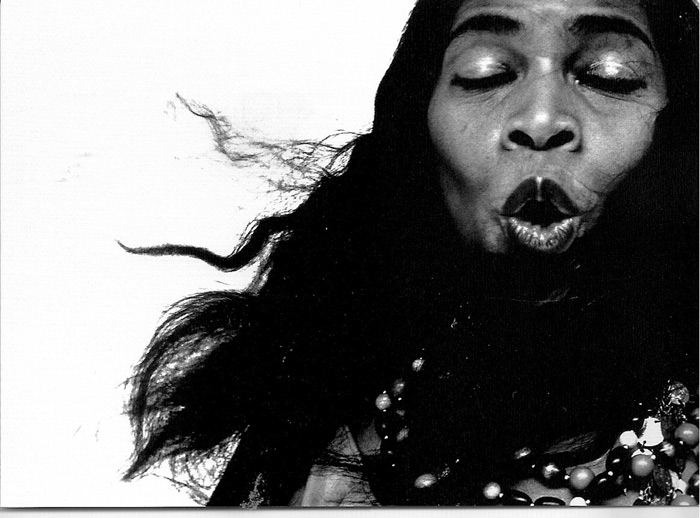Neighborhood Contralto
Dec 3, 2010
The best singer from my neighborhood here in Philadelphia might be the best singer ever from any neighborhood anywhere: Marian Anderson. A future Good Morning will look at her in the neighborhood; for now, let's get straight to the singing.
We remember Marian Anderson as the artist-entertainer who first broke through the color line in 1930s America. We do not remember her the way she appears in this Richard Avedon photo from much later in her life; she was not the sort of woman who let her hair down in public, literally or figuratively.
Maybe she looked a little like this sometimes down in the basement of the South Philadelphia rowhouse she bought with the earnings from her European concert tours, a basement in which she installed a piano and a champagne cooler and extra soundproofing in the walls. But even in her private music-making, it is hard to imagine her settling for anything less than, or straying very far from, the highest standards of Western highbrow music. Her training had been hard to come by, but she had mastered her art like nobody before or since. That's what Arturo Toscanini said after listening to her in Vienna, and it's what Jean Sibelius said when he begged her to let him write a song for her.
Seventy-five thousand Americans, white and black, gathered outside the Lincoln Memorial on a cold April morning in 1939 to hear Marian Anderson sing for them. Eleanor and Franklin Roosevelt had arranged the concert after the Daughters of the American Revolution had refused to let her perform in their hall, which like all accommodations in Washington back then was completely segregated. She would go on to sing at the inaugurations of presidents Eisenhower and Kennedy, and in 1963 she returned to the steps of the Lincoln Memorial to sing for hundreds of thousands of Americans at Martin Luther King, Jr.'s, march on Washington.
You can hear her sing at these and other events, from the 1920s through the 1960s, on YouTube. Even though the quality of the recordings is sometimes disappointing and the highbrow diction characteristic of the era's artists can be distracting, you'll hear a voice so silky and deep and glowing that it hurts.
She performed classical recital songs and operatic arias, and her rendition of Schubert's "Ave Maria" was particularly beloved, even though she was an alto, not a soprano. Her concerts also included "Negro spirituals," to which she applied her professional training; she didn't let loose with them but stayed cleanly loyal to the melody, performing them just as carefully and elegantly as she did her European art music. Nobody sings those songs that way any more, but Marian Anderson could pull it off.
Here she is singing "You hear de lambs a-cryin."
